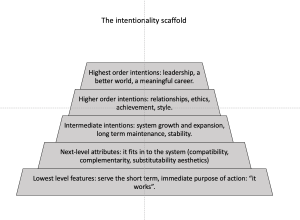The Road To Stagnation: Why Government Is The Enemy Of Economic Productivity.
The federal government is planning to hire an additional 87,000 IRS agents. Some of them may be armed. This is not the action of a friend or partner. It is central to government’s anti-economic behavior. But now that behavior has shifted to beast mode.
Federal income taxation of companies and individuals is an act of extraction from the economy – the seizure of what has been produced. Government produces nothing – all production occurs outside government. Say’s law stipulates that we must produce first in order to be able to consume. This law does not apply to government, who must extract and confiscate first in order to be able to spend. If they spend some of the confiscated funds on production by others, such as arms producers and vaccine manufacturers, they can be counted on to be inefficient, and they don’t subject themselves to the trade-off analysis of alternative and better uses of those funds.
Taxation, of course, is not the only enemy action producers must face. Government regulation is the other major imposition on production. We’ve reported here on the one million Federal regulations the typical large firm faces. These regulations are designed both to suppress activity and to divert spending from productive to non-productive channels. Compliance requires an administrative staff, lawyers, form-filling, and reporting. Regulations often require specific investments by firms – software to interface with government systems, special safety installations and equipment, government-required training regimens, and more inefficient processes. And today, there’s the added imposition of diversity requirements in employment that replace meritocratic hiring and slow down productivity and reduce functionality.
Federal agencies are designed to impede and impose upon productive firms, and their bureaucrats enjoy – and are rewarded for – doing so. That’s how incentive systems work. If a bureaucrat is to be promoted in the SEC or OSHA or FDA or IRS, they must demonstrate the work output of large numbers of successful prosecutions. They must haul in revenues from fines or settlements. Those who get to the top are not the ones that hold back.
The third army of the enemy assault on economic achievement is the Federal Reserve. By intervening to distort market interest rates, this army creates hard-to-manage financial uncertainty for business firms. Private investments in future asset-building must include a guess – that’s impossible to get right – about the whims of the Federal Reserve’s committees and Ph.D.’s. The Federal Reserve also regulates and controls all other banks, thereby placing their heavy hand on the scale of financing of business undertakings – for example, their location, the qualifications of their recipients, and their preferred projects.
And by destroying the value of the currency – the US dollar has lost more than 96% of its purchasing power since 1913 when the Federal Reserve was formed – the Fed forces pricing, squeezes profits, and removes economic incentives for growth and innovation. There’s less incentive to earn devalued dollars.
The only way for firms to stay at least half a step ahead of the government bureaucrats is to innovate, to come up with better and better customer services that generate the reward of the marketplace, resulting in growing revenues and profits that can be used to pay off the confiscatory taxes. Happily, America’s innovative firms have been reasonably successful. But, more and more, innovative action is going to be diverted in the direction of new ways to file tax forms, or to do accounting, or to design a multi-national organization that avoids excessive US taxes. Corporate innovation activity will gradually be drained off (which the government loves because then they can use it as an excuse to increase the budget of the Pentagon and NASA and the NSF and other government R&D grant givers).
Eventually, firms will give in. The enemy will win. It’s unlikely that all firms will become publicly owned, but they’ll just sidle up closer and closer to the government and ask, “Just tell us what to do and we’ll do it.” There’s plenty of evidence that that’s already happening. Microsoft and Apple bid on massive government defense contracts. Digital companies execute the surveillance and suppression of open speech that governments prefer. Banks make the loans that government wants them to make. Companies do what it takes to sell satellites and pharmaceuticals and delivery services to the government. They don’t want to be excluded or to miss out.
Why is government the sworn enemy of business and business firms and their productivity and service to customers? It’s a matter of control. Government must be able to exert unchallenged control over the citizenry, and the innovation and service ethic of business threatens to rival that. If customers are loyal to service provider businesses, they might recognize the superior alternatives on offer. Government can’t allow that. Therefore they are committed to outnumbering and outspending any opposition. The federal employee roll of over 2.8 million civilian workers easily takes care of the outnumbering part. The array of lawyers, inspectors, and compliance officers in government can easily overwhelm any private sector firm.
And government expenditures (($6.8 trillion in 2021) easily dwarfs any private sector firm’s spending capacity.
When all this personnel and spending power are arrayed against individual firms, there’s no contest. The firm must comply, hand over the sums that the government says they must cede, hire people and allocate time to engage with all the regulations that they face, and find ways to abandon the activities of which the government disapproves, while finding new ways to innovate to try to get ahead of the inspectors and agents. It’s a race to stagnation.
